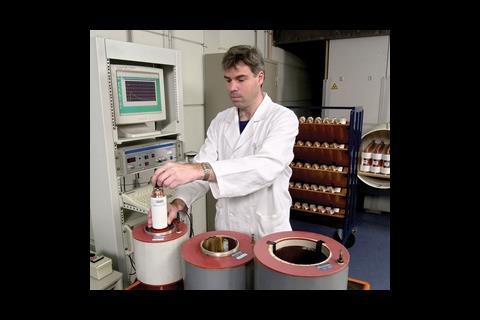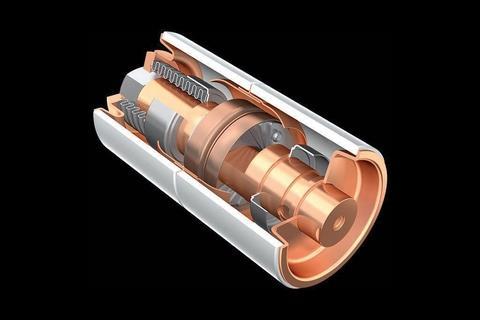The higher cost of solid-insulated vacuum switchgear is offset by other bonuses.
Many modern buildings with heavy electrical loads, such as IT equipment and air-conditioning plant, have electricity substations close to the load centre. Sometimes these are inside a high-rise building or at the heart of a complex such as a hospital, so the switchgear within must be safe and environmentally neutral.
Electrical supplies entering the building or site are typically 11kV or 33kV and controlled by medium-voltage switchgear. At this voltage, normal air-break switchgear is too bulky. Breaking the electrical arc drawn by the opening contacts may involve a blast of air or gas or switching in a vacuum. To reduce the risk of flashover between the current-carrying parts of the circuit-breaker itself, the device may be immersed in oil or gas.
Circuit-breaker manufacturers will often use the greenhouse gas sulphur hexafluoride (SF6) for circuit interruption and/or insulation. The electrical industry accounts for 75-80% of SF6 usage. While SF6 does not exist in the same concentrations as CO2, it has a global warming potential 24,000 times greater and an atmospheric life estimated at 3200 years compared with 50-200 for CO2.
Vacuum circuit-breakers are more common but even these often use SF6 gas as an insulant. However, vacuum switchgear with solid dielectric insulation can be a cost-effective, maintenance-free option, and is available as a retro-fit alternative to minimal oil switchgear.
Circuit interruption
Continuous development of vacuum interruption technology has seen the size of a 15kV interrupter bottle reduced from 180mm diameter to 50mm. Modern sealing techniques mean units retain their vacuum for more than 25 years.
Contact resistance remains low throughout life because erosion occurs only at the cathode, and eroded material is deposited uniformly on the anode. The contacts act randomly as cathode and anode so the effect is evened out. Also, the contacts are self-conditioning; rough spots are smoothed out by the discharge when the contacts are opened on load.
Leaks are rare and emit no harmful products. SF6 is non-toxic and non-flammable on its own but arc interruption or internal arcing can produce toxic products. Equipment containing SF6 should have regular inspections and leak warning systems.
The end-of-life disposal of SF6 equipment has been compared with that for polychlorinated biphenyls (PCBs) in transformers. Vacuum interrupters are made from materials that can be recovered and recycled at the end of life. They contain no greenhouse gases and do not present health hazards due to decomposition.
Insulation
Vacuum switchgear is frequently enclosed in SF6 gas because the compact size of the vacuum bottles needs special measures to improve insulation. A 150mm ceramic length will have a basic insulation level (BIL) of 125kV in air. For this reason circuit-breakers may be immersed in a dielectric medium such as oil or SF6 gas to raise the BIL to 170kV.
Oil is, however, being phased out because of fire risk, so gas-filled switchgear (GIS) with SF6 insulation is favoured by many manufacturers, although this reintroduces problems of SF6 technology. An alternative approach is to enclose the vacuum interrupter in a potting compound such as polyurethane or epoxy. In some cases an epoxy insulator with a contoured profile, similar to the “sheds” used on overhead line insulators, is used to increase creepage distances. The entire interrupter and busbar can be enclosed in solid insulation.
While the unit cost for solid-insulated switchgear is higher, maintenance costs for GIS can be up to 9% of the equipment value per year, excluding other safety and insurance costs. At end-of-life, GIS dismantling, transport and disposal costs are high. In contrast, solid-insulated equipment is fully ISO 14001 compliant.
Source
�ڶ����� Sustainable Design
Postscript
Alex Pikkert is a product manager at Eaton Bill



















No comments yet